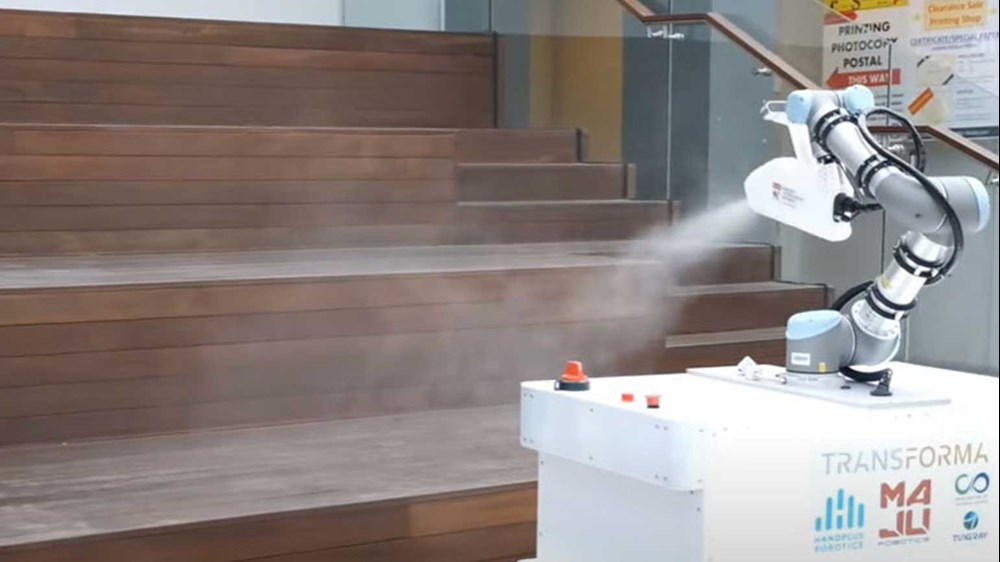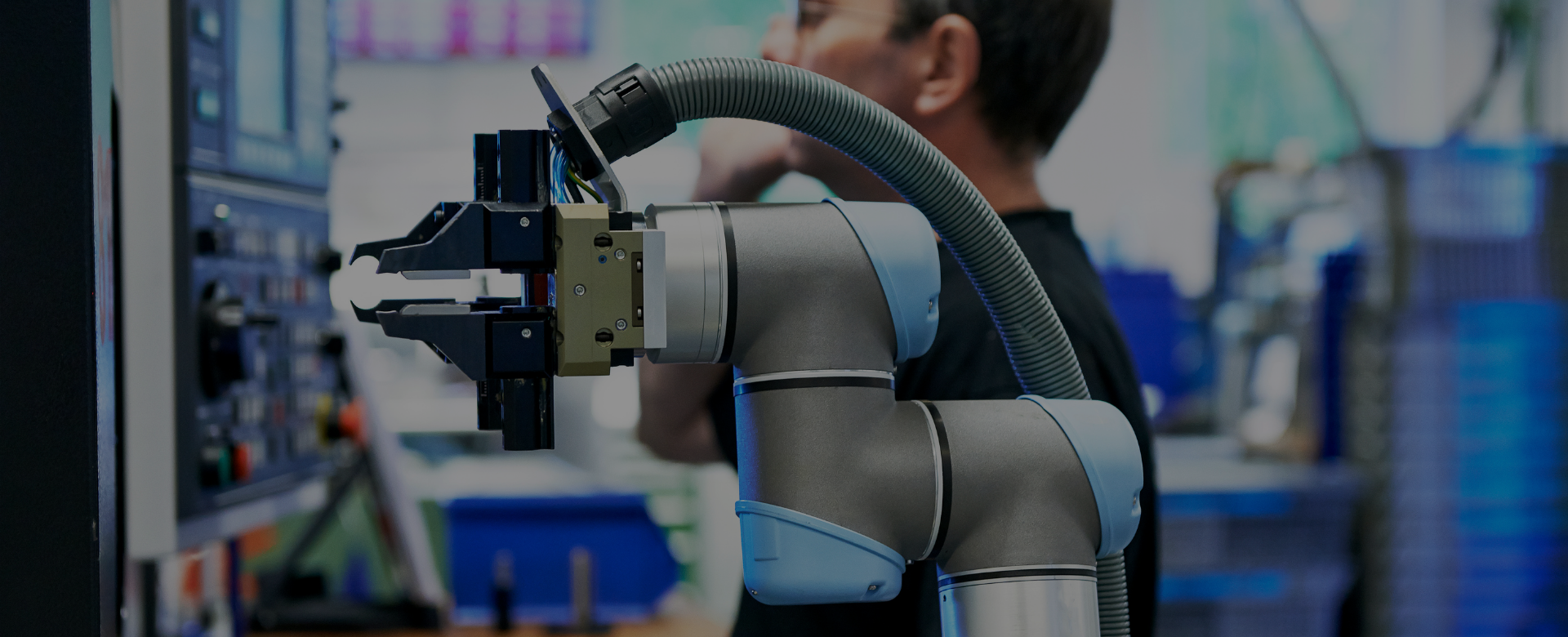Fitted with a gripper from our UR+ partners at Robotiq, the ADAMMS-UV can manipulate objects, enabling the cleaning of hard-to-reach surfaces. Like the XDBOT, the ADAMMS-UV can be remotely operated, ensuring that human workers maintain social distancing regulations and avoid possible infection. Cameras mounted on the cobot assist human operators with navigation. A time-of-flight camera on the robotic arm scans its surroundings and uses infrared light to determine depth. Using this visual information, the ADAMMS-UV then builds a 3D model of the area to be disinfected.
“We actually started developing the mobile cobot application as a solution for machine tending,” says Satyandra Gupta, director of USC Center for Advanced Manufacturing. “We chose a UR5 cobot for this due to the built-in safety, which meant we could use it in collaborative mode around people. UR is the leader in the field of cobots so it was a clear choice for us,” he says, explaining that when the COVID-19 crisis hit, USC was required to clean its own labs. “A lab is complex, you can’t just spray everything with bleach. We looked into UV disinfection and realized that this could work, however, the solutions on the market were for more large-scale disinfection of rooms and would not be able to for example open a drawer, take out an item, place it down and place the disinfection wand over it,” says Gupta, adding that his team is now working on incorporating a second UR5 cobot, so ADAMMS can disinfect twice as fast; one arm can i.e. open a drawer while the other arm carries the wand.
The team has successfully tested the prototype in the lab. Further testing and validation is underway to ensure the technology can be used in public places including hospitals, hotels, and offices
COVID-19 testing with Cobots
COVID-19 has also resulted in an unprecedented demand for medical testing. In response to this extraordinary demand, Universal Robots co-founder Esben Østergaard turned his creative energies to the design and development of the world's first autonomous throat swabbing robot launched by Lifeline Robotics, a company he co-founded with the Maersk Mc-Kinney Moller Institute at the University of Southern Denmark (SDU).
Developed in collaboration with robotics researchers from SDU, the robot uses UR3 cobot arms fitted with a custom 3D-printed end-effector. The process is simplicity itself, beginning with the patient scanning their ID card. Right away, the robot prepares a sample kit, consisting of a container with a printed ID-label and it picks up the swab. Then, using its built-in vision system, the robot identifies the right points to swab in the patient’s throat. As soon as the swab process is complete, the bot places the sample in a jar and screws on the lid. The jar is then sent to a lab for analysis. The entire process takes around 7 minutes in total, with the swab itself taking just 25 seconds. The system was officially launched in Denmark at the end of May










